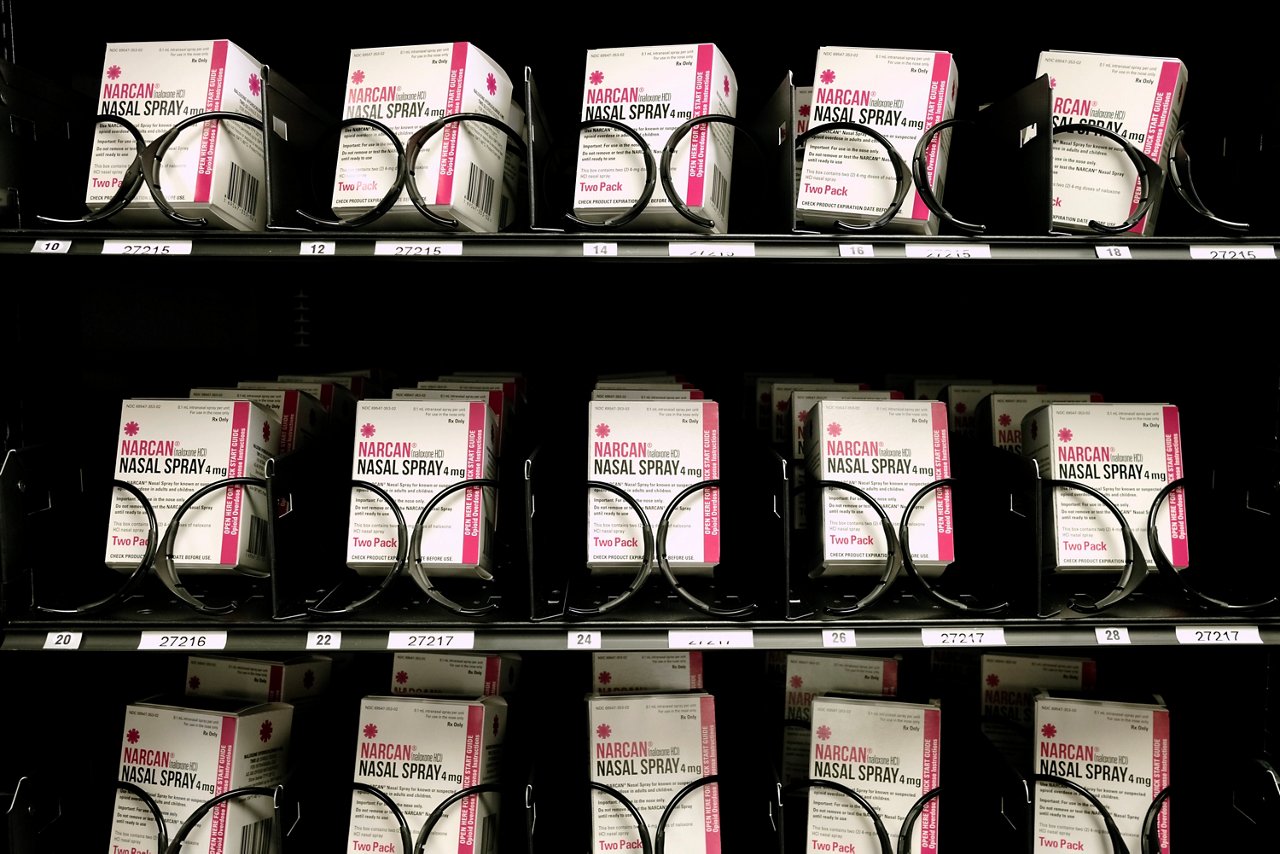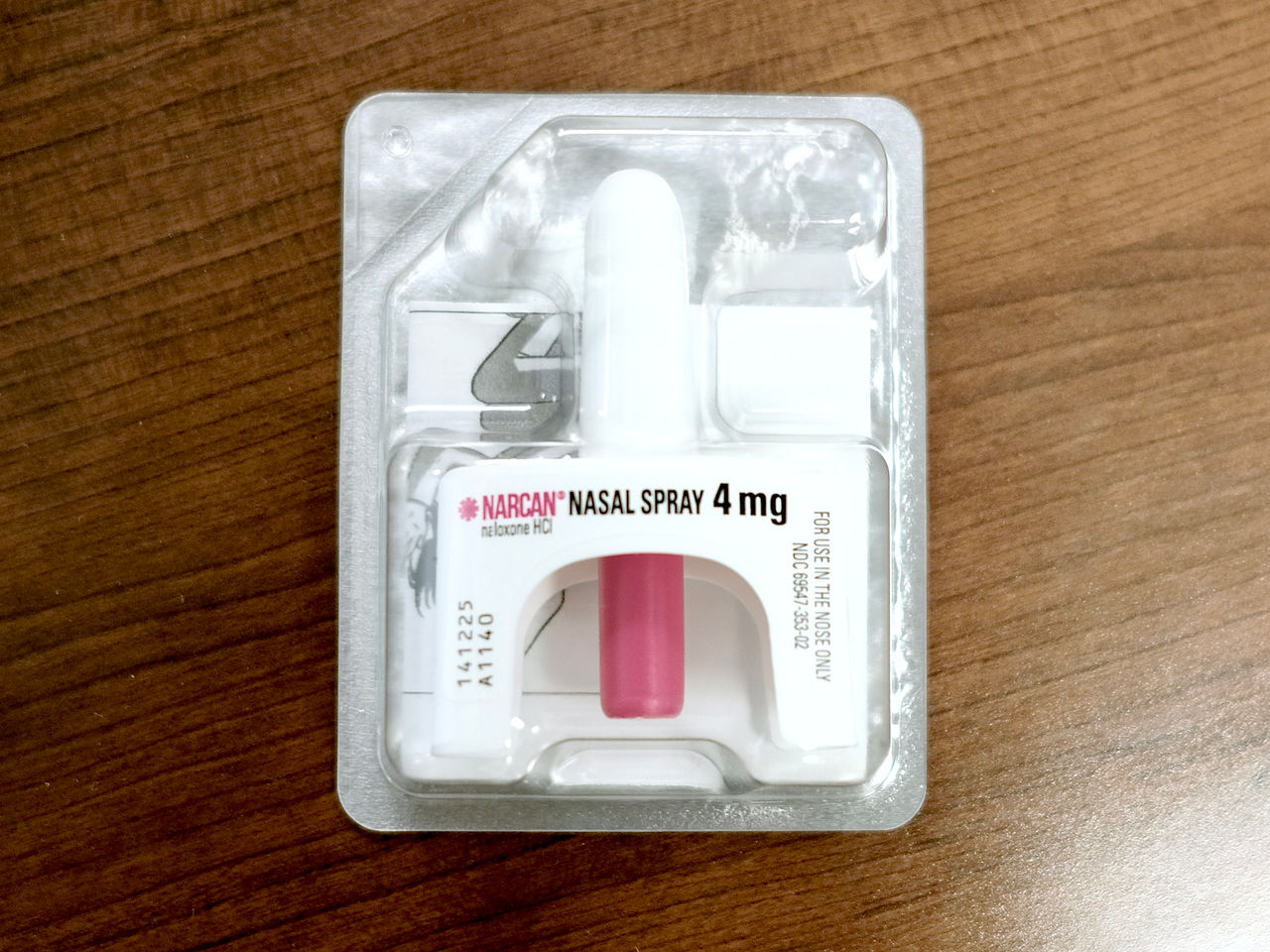4 facts on no-cost Narcan distribution in NC

Seven years ago, the opioid crisis was starting to spiral out of control. During my time as a physician in an outpatient pain management practice, I witnessed the impact opioid addiction has on people.
I was so affected by my work with 1 patient who’d developed a substance use disorder while being treated for pain that I shared her story on the Blue Cross and Blue Shield of North Carolina (Blue Cross NC) blog. I’ve been thinking about that article recently. The landscape has changed an awful lot since I first wrote it. Tragically, there’s still a lot more work that needs to be done.
Here's what got me thinking: Not long ago, Healthy Blue – the Blue Cross NC Medicaid program – sponsored a kiosk that dispenses Narcan, a medication that can reverse opioid overdoses. This is offered at no cost to anyone coming into the lobby of the Alamance County Health Department. The machine was the first of its kind set up in a human services center / public health department.
 The Narcan kiosk in the lobby of the Alamance County Health Department is sponsored by Healthy Blue, the Blue Cross and Blue Shield of North Carolina Medicaid program. | Photo: Marc DeRoberts
The Narcan kiosk in the lobby of the Alamance County Health Department is sponsored by Healthy Blue, the Blue Cross and Blue Shield of North Carolina Medicaid program. | Photo: Marc DeRoberts
Alamance County, our partner in this effort, has been a leader in increasing access to Narcan and educating about harm reduction. This example of cross-sector investment represents an important, collaborative step forward in combating the surge in overdoses. But, like so many new things, the kiosk has stirred up plenty of questions. Social media posts about it generated a lot of commentary; most of it was positive, but many people shared concerns and voiced their anxieties. This skepticism reveals how misperceptions and stigma remain closely attached to substance use disorder and treatment.
In the spirit of keeping the forward momentum going, I wanted to explore the truth behind 4 common myths that negatively influence how people feel about Narcan distribution and undermine public support for these vital programs.
1. Fact: Offering Narcan at no cost does not encourage opioid use
The simple truth is that naloxone – that’s the generic name for Narcan – saves lives and decreases rates of overdoses, based on the North Carolina Naloxone Distribution Toolkit (PDF). Many public health organizations see distribution programs as an important component of a comprehensive strategy to address the opioid epidemic.
According to the Substance Abuse and Mental Health Services Administration (SAMHSA), studies show easy access to naloxone does not lead to increased drug use. In fact, there are some indications that “naloxone availability results in a decreased use of opioids.”
The Alamance County kiosk distributes more than Narcan: The county also provides resources to help people know where to turn for support with substance use disorder. For many people, the kiosk isn’t just a last resort in an emergency – it could be a starting point for treatment.
Having access to a life-saving drug won’t enable “more of the same,” but it very well might open a doorway to change.
 Narcan is a nasal spray used to reverse opioid overdoses. | Photo: Marc DeRoberts
Narcan is a nasal spray used to reverse opioid overdoses. | Photo: Marc DeRoberts
2. Fact: Substance use disorder isn’t a matter of choice
Lots of people wonder about the value of investing so much money to help a few people presumed to be making bad life choices when we could be doing more to help “everyday” North Carolinians.
Addiction isn’t a choice. It’s important to remember that there’s a human face on every instance of opioid addiction and every statistic of overdose. My article all those years ago focused on my relationship with a patient who’d gotten addicted after being prescribed opioids before she’d started seeing me. She wasn’t misusing opioids for recreational enjoyment. Her addiction didn’t need encouragement. She was ashamed of her substance use disorder and wanted desperately to turn the page.
Her story isn’t unique. In fact, some studies have suggested that 80% of heroin addictions begin with prescribed opioids. Information about prescription opioids on the Centers for Disease Control and Prevention (CDC) website says, “one in four patients receiving long-term opioid therapy in a primary care setting struggles with opioid addiction.” The data from study to study may vary, but they all tell a similar story: Opioid addiction hits hard-working people, from all walks of life, and it does not discriminate.
This myth also glosses over the sheer magnitude of the challenges we face. The NC Department of Health and Human Services estimates that, every day, nearly 12 North Carolinians lose their lives as a result of an overdose – that’s more than 37,000 overdose deaths between 2000-2022. These were friends, neighbors, co-workers, and loved ones.
3. Fact: Most households should probably have Narcan on hand
It’s telling that the Narcan kiosk in Alamance County is the first of its kind installed in a North Carolina human service center / public health department. Other similar machines across the state are placed in detention centers. That statistic reflects just how pervasive the “bad element” myth actually is, informing public health strategy in subtle (and likely unintentional) ways. Furthermore, the overwhelming placement of these resources in detention centers reflects another pervasive belief: Narcan is only useful in situations when someone is using opioids illegally.
 The Narcan kiosk sponsored by Healthy Blue is located in the lobby of the Alamance County Human Services Center. | Photo: Marc DeRoberts
The Narcan kiosk sponsored by Healthy Blue is located in the lobby of the Alamance County Human Services Center. | Photo: Marc DeRoberts
In fact, anyone who is using a prescribed opioid and adhering to all the precautions according to the label can experience a reaction or an overdose. The CDC estimates that 44 Americans died every day in 2020 from a prescription opioid overdose. As awareness of the opioid epidemic has grown, providers have become more cautious about prescribing them. Still, there were more than 131 million opioid prescriptions in the US in 2022 – that’s nearly 40 prescriptions for every 100 people.
That’s why SAMHSA recommends that anyone – friend, family member, caregiver, or even a concerned member of the public – who’s worried about the risk of an opioid overdose from prescription or illicit opioids should have naloxone on hand and ready to administer. It should be in our homes, in our schools, in our workplaces – not just detention centers.
4. Fact: Narcan is cost effective
Multiple studies have shown that the community distribution of naloxone is cost effective, including 1 which found that every dollar spent on a distribution program in North Carolina generated more than $2,500 in societal benefits by preventing opioid overdose deaths.
Still, the economic impact isn’t what’s most important. As a physician who’s sat side by side with patients working through substance use disorders, I can’t look at the opioid epidemic through dollar signs. For me, I see the value in the face of that woman I helped and wrote about all those years ago – and all the other patients I’ve seen since then.
Narcan distribution saves lives. That’s no myth. It’s the truth – plain and simple.
Browse related articles


Blue Cross and Blue Shield of North Carolina does not discriminate on the basis of race, color, national origin, sex, age or disability in its health programs and activities. Learn more about our non-discrimination policy and no-cost services available to you.
Information in other languages: Español 中文 Tiếng Việt 한국어 Français العَرَبِيَّة Hmoob ру́сский Tagalog ગુજરાતી ភាសាខ្មែរ Deutsch हिन्दी ລາວ 日本語
© 2024 Blue Cross and Blue Shield of North Carolina. ®, SM Marks of the Blue Cross and Blue Shield Association, an association of independent Blue Cross and Blue Shield plans. All other marks and names are property of their respective owners. Blue Cross and Blue Shield of North Carolina is an independent licensee of the Blue Cross and Blue Shield Association.


